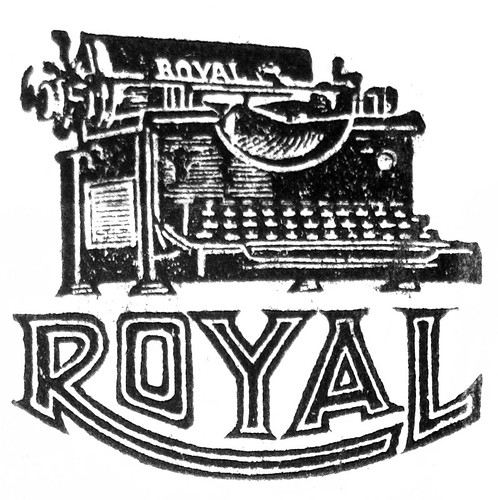- royaltypewriter
- New Member
 Offline
Offline 
- From: united states
- Registered: 06-9-2015
- Posts: 11
Which typewriters have larger/smaller typefaces?
hey guys, i have 5 typewriters so far, and only one of them has the large pica font(10 characters per inch), the others have the smaller font size(12 cpi). I would prefer to buy typewriters with the large font but i dont know how i could find them. is there a specific brand of typewriters that uses only large font? are newer typewriters more likely to have large font than older models? because all my old typers (1950's) have small font, and the one typer that has the large font is from the 1970's
- TypewriterGuy
- Typewriter Talk Vet
 Offline
Offline 
- From: United States
- Registered: 24-4-2015
- Posts: 1,250
Re: Which typewriters have larger/smaller typefaces?
There are some large font typewriters out there. One of our fellow members has one, but I cannot remmeber who.
Back from a long break.
Starting fresh with my favorite typer. A Royal Futura!
- skywatcher
- Moderator
 Offline
Offline - From: The Prairies of Alberta
- Registered: 14-3-2013
- Posts: 742
Re: Which typewriters have larger/smaller typefaces?
Hi RTW
Most portable tw's have a 10" platen so a quick look at the typing guide or the paper bale will often tell you. If the numbers on the typing guide or paper bale only go up to 80, then it's a pica. If the numbers go up to 100, then it's elite. Some of the European machines have 11 cpi so the guide usually goes up to 90. Hope this gives you something to work with,
Sky
PS. @ TW Guy "Some member have large font tw's"
Yes, I have a 6 cpi SCM and I believe Beak has a 17 cpi Hermes, talk about the two extremes!
Last edited by skywatcher (04-10-2015 16:05:50)
We humans go through many computers in our lives, but in their lives, typewriters go through many of us.
In that way, they’re like violins, like ancestral swords. So I use mine with honor and treat them with respect.
I try to leave them in better condition than I met them. I am not their first user, nor will I be their last.
Frederic S. Durbin. (Typewriter mania and the modern writer)
- Spazmelda
- Key Master
 Offline
Offline 
- From: Ohio
- Registered: 25-2-2015
- Posts: 830
Re: Which typewriters have larger/smaller typefaces?
I also have a 6 cpi smith corona, and I think malole does too. It's interesting that most of the OPs machines are elite. I seem to run across more pica than elite, and I prefer elite.
- TypewriterGuy
- Typewriter Talk Vet
 Offline
Offline 
- From: United States
- Registered: 24-4-2015
- Posts: 1,250
Re: Which typewriters have larger/smaller typefaces?
Ugh. All of my typewriters, I think have pica, except my oliver 9.
Back from a long break.
Starting fresh with my favorite typer. A Royal Futura!
- KatLondon
- Key Master
 Offline
Offline 
- From: London
- Registered: 11-10-2014
- Posts: 995
Re: Which typewriters have larger/smaller typefaces?
Mine are a total mix. I have yet to get hold of a pica Olympia, though. Hermes 3000 & Baby are elite but the 2000 is pica; & I have two Smith-Coron Silent-Supers - one pica, one elite. I hsve an elite Olivetti Lettera 22 (broken), and elite 32. My three older (that is, glass-topped keys, black) machines (Remington Envoy, Remington Rand 5, Olympia Progress) are all pica.
It's funny though - there is something in me that thinks I prefer the pica - but in fact I think I prefer elite (double- or even triple-spaced) for when it's work, and pica for when it's just me... Smaller typefaces can be even more easily readable than larger ones, with enough space around them.
Last edited by KatLondon (04-10-2015 18:15:33)
- ztyper
- Key Master
 Offline
Offline 
- From: Somewhere in New Jersey
- Registered: 01-10-2014
- Posts: 773
Re: Which typewriters have larger/smaller typefaces?
It's really all hit or miss. However, most typewriters that I have encountered are pica. And it should be said that every wide-carriage stanard typewriter I've owned are elite.
A high schooler with a lot of typewriters. That's pretty much about it.
- beak
- Key Master
 Offline
Offline 
- From: Qld Australia
- Registered: 24-3-2013
- Posts: 929
Re: Which typewriters have larger/smaller typefaces?
I don't think it goes by brand - but a good way to check is to ask the seller to put an inch ruler on the paper bale's scale starting at zero and see which number comes next to the 1" mark - this is the CPI (characters per inch). I have machines ranging from 6CPI to 17 CPI, but there may be machines with larger and smaller typefaces still.
Sincerely,
beak.
- royaltypewriter
- New Member
 Offline
Offline 
- From: united states
- Registered: 06-9-2015
- Posts: 11
Re: Which typewriters have larger/smaller typefaces?
thanks for the tip about the paper guide measurement, i checked my pica typewriter and it indeed says 80, i also checked my olympia sm3 but it says 90, and the font is elite. do you measure the paper guide all the way to the right or only where it says 90? Wish i had known this before i bought my SCM silent, ![]()
- •
- KatLondon
- Key Master
 Offline
Offline 
- From: London
- Registered: 11-10-2014
- Posts: 995
Re: Which typewriters have larger/smaller typefaces?
Hi royaltypewriter. The idea is that each set of ten numbers on the paper bail represents ten characters. How big is it? If it's an inch then you have a 10cpi pica typeface. If smaller, then you cound how many digits are in an inch.
Most portables have 10in platens, as skywatcher says, so you can work out from that how many characters the paper bail would probably go up to. My Olympia SM3 goes up to 90 and it has 11cpi. My Hermes 3000 goes up to 120, and the typeface is 13cpi.
You do, with experience, just get to have a feel for it; I can look at a typewriter even in a photograph and if there's a clear view of these markings I can tell if I think it has smaller or larger type. Often in type sample photos you get a view of what the number is in the middle. Obvs, 40 means larger type and a 50 would mean a smaller.
But legibility is not just about size; the 13cpi type on my 3000 is gorgeously crisp and clear and legible, maybe more so than any other machine I own, except maybe the elite Olympias. Pica is cute and friendly and easy to read in one way, but counter-intuitively I think the letters being more spread out and open makes them harder for the eye to take in quickly. For work I think I prefer the smaller.
Last edited by KatLondon (06-10-2015 17:49:12)

 1
1 